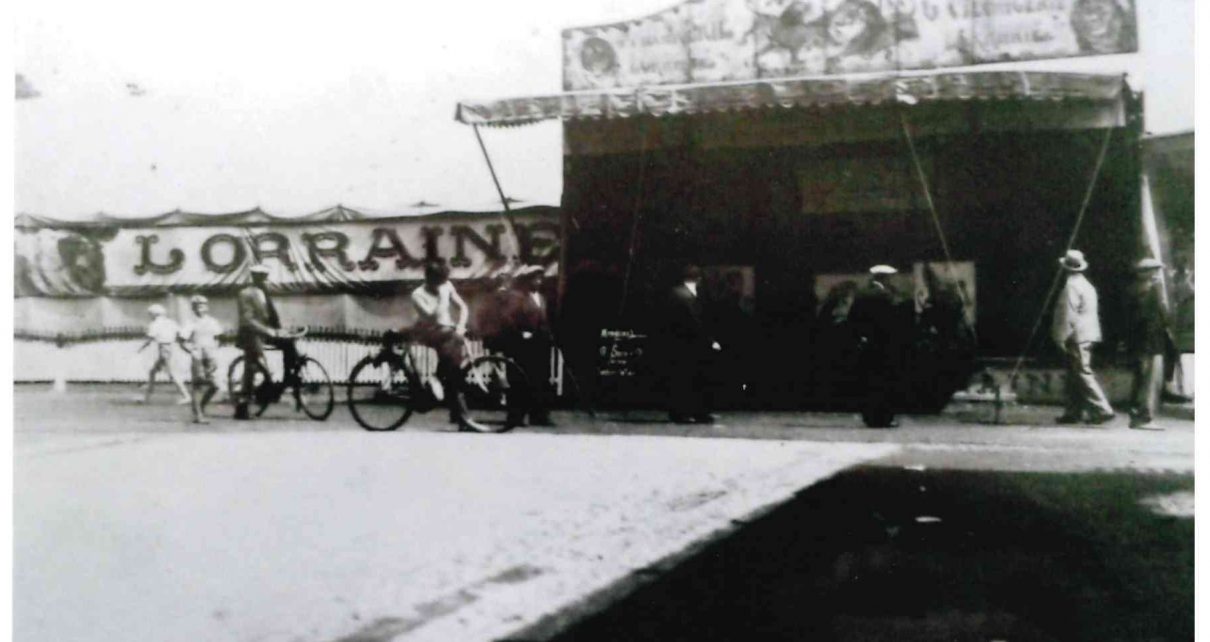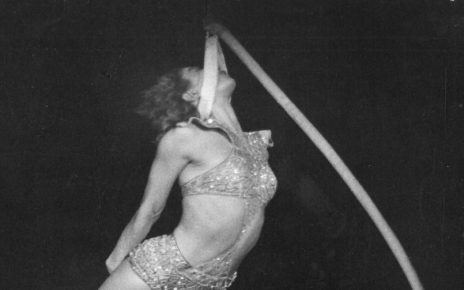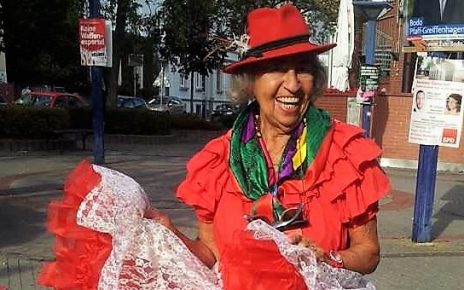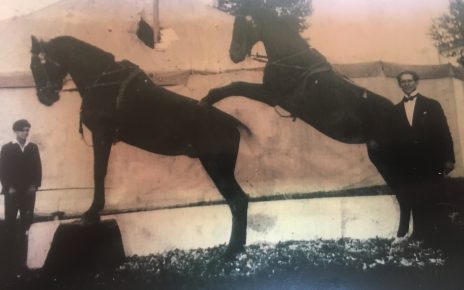For decades, the Michelet family owned a menagerie-circus (first Ménagerie Lorraine Giacometti/ later Cirque-ménagerie Michelet). Many articles and advertisements published in newspapers state that this family activity goes back to the second half of the nineteenth century. On tour the family went into different partnerships with other well-known circus companies, like Albus and Grüss/Gruss. Henri Thétard, Journalist, a predator tamer himself and a circus historian, only mentioned the Michelet in his book as a travelling menagerie. The family’s use of trucks can be seen as a sign of financial wealth at that time.
At the end of the First World War, Paul Michelet decided to settle in the city of Gièvres, central France. According to one of his descendant, Marcel Michelet, they were very welcomed by the municipality, which saw no inconvenience that so called “nomads” chose Gièvres as their residency. In the 1920s, other circus and fairground families choose to settle in Gièvres. The city then became one of the meeting places of French circus families. Extraordinary grave sites of the communal cemetery are reminders of the families’ circus background.
Still today, older inhabitants of the village remember stories about the mother Michelet sitting in front of her house on a crate filled with snakes. Local memory tells the story of lions wandering through the church square. Many inhabitants of Gièvres are caravan owners, using particularly for religious pilgrims during spring and summer time. According to the last census in 2010 500 of 2500 Gièvres inhabitants declared themselves as travellers.
During WWII, French authorities regarded the Michelets still as a so called “nomadic family”, besides the fact that they could prove permanent residency in Gièvres. The family got arrested and sent to the internment camp Montreuil-Bellay (see the fate of the Sénéca family). Documents of the French authorities from that time stated that the family, however, was reliable, due to their “behavior, morality and livelihoods”. Thus,and thanks to the property the Michelets owned in Gièvres and to their financial resources in general some family members benefited of early camp releases. The last family members could leave Montreuil-Bellay in 1944 and return to Gièvres.

After the War, the city of Gièvres renamed the Clemenceau Street, where the Michelet had built their first houses, into “the Lions Street”. Nowadays, the Michelets have given up their former circus and fairground activities. They are very active in sharing their family history, especially on social networks.
Author: Laurence Prempain, based on a first version of Bruna lo Biundo
Sources:
Archives départementales Maine-et-Loire. Adrian Paul, Sur le chemin des grands cirques voyageurs. Bourg-la-Reine, Adrian, 1959; Asséo, Henriette, Les Tsiganes. Une destinée européenne. Paris, Gallimard, 1994; Chahine, Marwa, « J’étais résistant, Monsieur. J’ai défendu mon pays », Libération, 23 juillet 2010; Filhol, Emmanuel, « L’indifférence collective au sort des tsiganes internés dans les camps français, 1940-1946 ». Guerres mondiales et conflits contemporains, n° 226, 2007, pp. 69-82; Jacob Pascal, Les métiers du cirque, histoire et patrimoine. Portet-sur-Garonne, Loubatières, 2013; Jacob Pascal, Une histoire du cirque. Paris, Seuil 2016; Thétard, Henry: Les Dompteurs ou la Ménagerie des origines à nos jours. Paris 1928.




